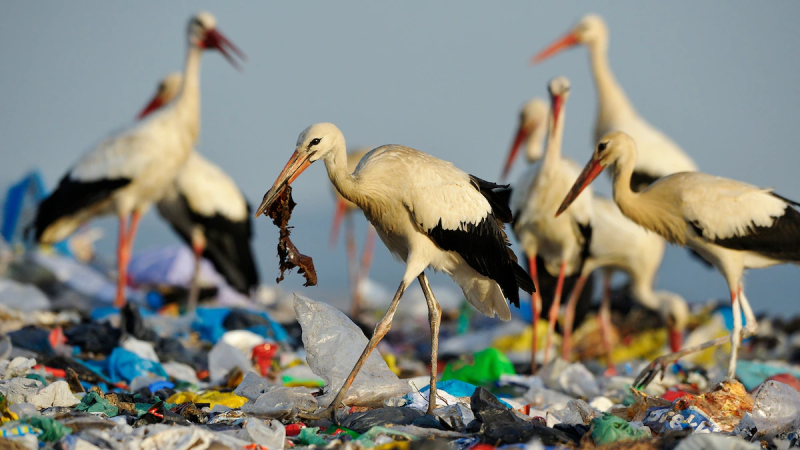Pollution is an important thing to worry about in Georgia.
Animals in Georgia frequently consume plastic because they’re not always capable of telling the difference between food and plastic. Organisms which are filter feeders, like plankton, shellfish, and baleen whales, as well as those that dwell under the sand, like lugworms, are unable to differentiate between the two.
Some fish bite at floating plastics in the water because they believe it to be fish eggs, and as a result, they end up eating plastic.
Plastic bags are mistaken by turtles for the jellyfish which are typically part of their diet. Plastic may nearly always be detected in the stomachs of northern fulmars, which hunt for their food by flying with their beaks open above the water’s surface.
Northern fulmars gather their food. Many animals that graze on land are also known to consume plastic. The probability of plastic garbage being consumed by animals goes up when it is covered in scraps of food.
GA Residents should be more careful about the pollution they create. According to Sandy Springs waste management pros, renting a dumpster to remove junk in bulk is a handy solution to discard unneeded junk. This will certainly help the environment by putting trash where it belongs, and not in the ocean.
What Happens When Animals Eat Plastic
Animals that consume plastic by mistake suffer and frequently pass away as the result of its toxin’s effects. Plastic that is swallowed causes the stomach to get and remain full, which, as one might expect, decreases feelings of hunger. The animals consume less food, get less energy as a result, and get weaker.
Larger bits of plastic can also obstruct the animal’s gastrointestinal tract, making it impossible for the plastic to be passed out of the body. In other instances, the stomach grinds the plastic into minute particles, which are then dispersed throughout the environment.
The northern fulmar crushes and disperses millions of fragments each and every year in this manner. Some of it’s left behind at nesting locations that have been abandoned.
What Animals Eat Plastic In The Ocean
Turtles, seagulls, and young seals are all susceptible to having plastic can rings attached around their necks, and this is a common occurrence. As the animal continues to develop and expand, the plastic ring that is placed around its neck becomes tighter, eventually cutting into the animal’s skin and leading to infections.
Plastics also pose a significant threat to the hatchling stages of turtles. As soon as the baby turtle emerges from its egg, it makes its way toward the water along the beach. They frequently become entangled after wandering into bottles and plastic cups & getting stuck in the process. They frequently perish as a result of their incapacity to escape.
Fishing gear is one of the leading contributors to the mortality rate in marine ecosystems. Animals such as whales, dolphins, sharks, & turtles frequently become entangled in these fishing nets or gear that has been abandoned. Because of this, they are unable to reach the surface to get air, and as a result, they begin to suffocate.
Plastic Smells Like Food To Many Species
According to recent research, the ability of animals to smell is the key factor that contributes to the widespread eating of plastic by marine animals. The major contributor to this problem is the fact that plastic has an odor that is eerily similar to that of algae, a plant that makes up a sizeable portion of the water in our oceans.
Krill, a type of very small crustacean that is an essential component of the food chain for many marine organisms, feeds on algae. Taking this concept one stage further, seabirds base the majority of their diet on krill. Because of this, it can be deduced that these birds consume a significant quantity of plastic.
Dimethyl sulfur, with a strong and sulfuric smell, is released as algae decomposes. The smell of krill has become a significant signal for feeding time for seabirds, who have learned to correlate this scent with the abundance of food they are searching for.
Algae thrive in our waters because of the abundance of plastic trash floating in the water. More & more plastic is being dumped into our waterways, which is leading to an increase in algal blooms and the discharge of DMS. The introduction of plastic into the ocean has the effect of triggering seabirds’ hunting instincts, causing them to go on a plastic binge, mistaking it for krill.
How Do We Stop Sea Animals From Eating Plastic
There are numerous evolutionary and biological causes that have led to this plastic-eating plague in the oceans. The dilemma stems from our own insatiable desire for plastic products and the reckless disregard for our oceans. It is our species’ conduct that is causing the problem, not the evolutionary concerns that are interfering with it. Rent a dumpster if you have too much junk at home, this will reduce pollution in Sandy Springs and Georgia.

